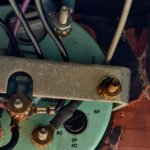comstox
Petty Officer 2nd Class
- Joined
- Sep 29, 2017
- Messages
- 186
As mentioned in an ongoing post, I recently replaced both my trigger and stator on 1984 75Hp Mercury outboard. I get spark on all four now but now my tach doesn't work. New stator is from CDI, old was original Merc.
I have two questions:
1) Can I run a long wire from my rectifier up to the tach to test? (Should I try that?)
2) I saw somewhere that different stators have different settings and that I MAY need to change something on the back of my tachometer. Help me with this guys.
Thanks in advance!
I have two questions:
1) Can I run a long wire from my rectifier up to the tach to test? (Should I try that?)
2) I saw somewhere that different stators have different settings and that I MAY need to change something on the back of my tachometer. Help me with this guys.
Thanks in advance!




















